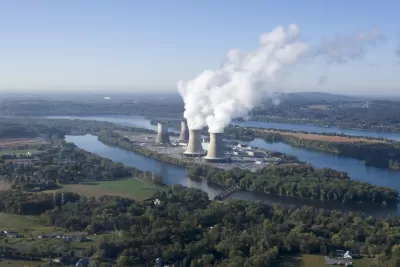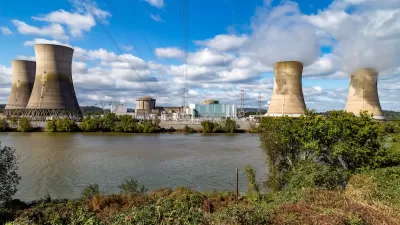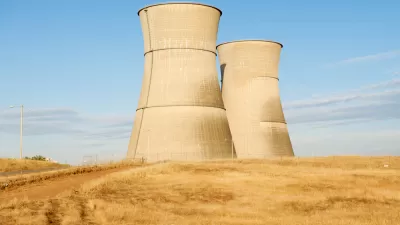Nuclear power plants around the country are shutting down. The communities where nuclear plants have been located for decades will now have to figure out how to rebuild their economies without them.

"There’s at least one thing worse than having a nuclear power plant in your town," writes Alan Greenblatt. "That’s having your nuclear power plant shut down."
Greenblatt sums up the issues that arise after a nuclear plant closes:
For obvious reasons, nuclear power plants were mostly built in fairly remote places, away from population centers. But they’re big facilities, with highly paid staff. When one of them closes, it can leave enormous holes in the local tax base.
The occasion for Greenblatt's analysis is the recent announcement by Exelon Corp that it will close down Three Mile Island in 2019. Three Mile Island is the site of the worst nuclear disaster in U.S. history, so Greenblatt's lede is all the more pointed.
Greenblatt says previous plant closures have preceded population losses and increased taxes. When the Vermont Yankee plant in Vernon, Vermont shut down in 2014, the local economy lost $100 million of activity. Another case study is offered by San Luis Obispo, in California, where the Diablo Canyon reactor is shutting down. Greenblatt suggests such towns will be challenged by implementing a new lens for their long-term strategic planning: one without the built in economic engine of a nuclear power plant.
FULL STORY: This Is What Happens When a Nuclear Plant Shuts Down

Alabama: Trump Terminates Settlements for Black Communities Harmed By Raw Sewage
Trump deemed the landmark civil rights agreement “illegal DEI and environmental justice policy.”

Planetizen Federal Action Tracker
A weekly monitor of how Trump’s orders and actions are impacting planners and planning in America.

The 120 Year Old Tiny Home Villages That Sheltered San Francisco’s Earthquake Refugees
More than a century ago, San Francisco mobilized to house thousands of residents displaced by the 1906 earthquake. Could their strategy offer a model for the present?

Indy Neighborhood Group Builds Temporary Multi-Use Path
Community members, aided in part by funding from the city, repurposed a vehicle lane to create a protected bike and pedestrian path for the summer season.

Congestion Pricing Drops Holland Tunnel Delays by 65 Percent
New York City’s contentious tolling program has yielded improved traffic and roughly $100 million in revenue for the MTA.

In Both Crashes and Crime, Public Transportation is Far Safer than Driving
Contrary to popular assumptions, public transportation has far lower crash and crime rates than automobile travel. For safer communities, improve and encourage transit travel.
Urban Design for Planners 1: Software Tools
This six-course series explores essential urban design concepts using open source software and equips planners with the tools they need to participate fully in the urban design process.
Planning for Universal Design
Learn the tools for implementing Universal Design in planning regulations.
Clanton & Associates, Inc.
Jessamine County Fiscal Court
Institute for Housing and Urban Development Studies (IHS)
City of Grandview
Harvard GSD Executive Education
Toledo-Lucas County Plan Commissions
Salt Lake City
NYU Wagner Graduate School of Public Service





























